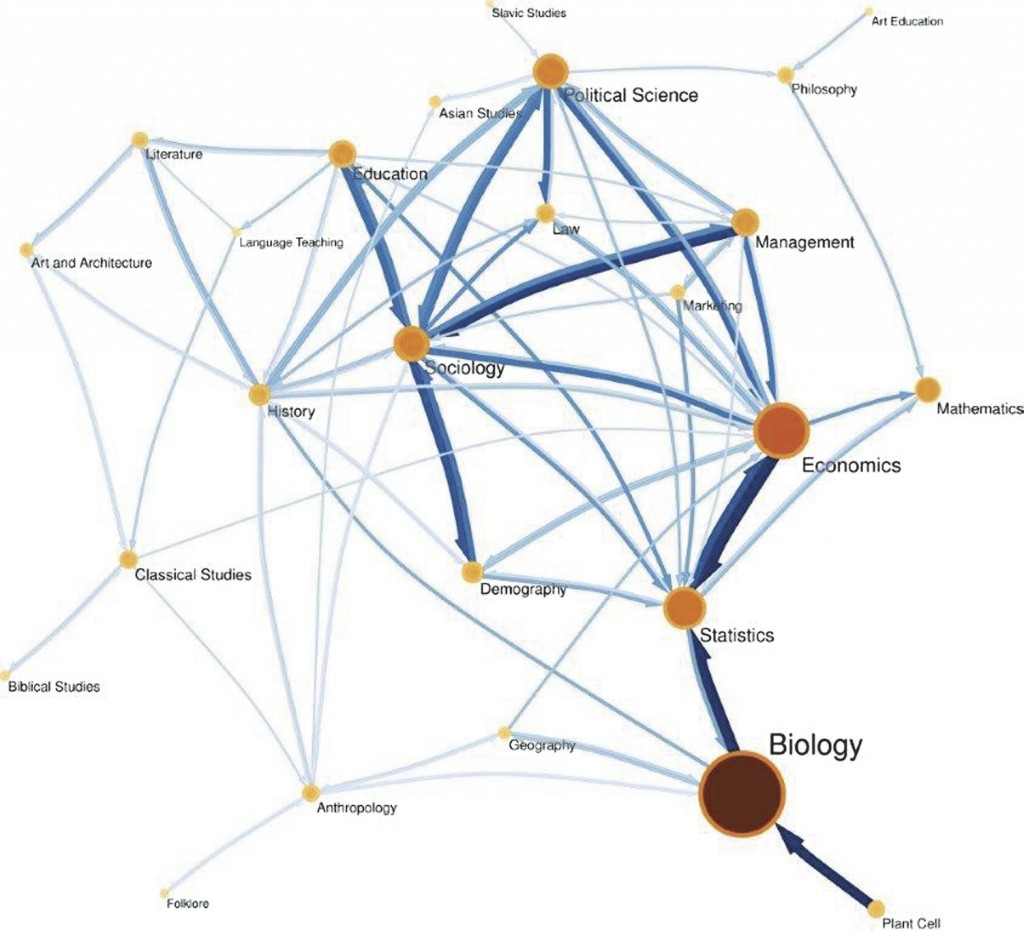Cross-posted at Montclair SocioBlog.
Do Democrats and Republicans have a similar lack of respect for science? Alex Berezow seems to think so. The title of his op-ed in USA Today is “GOP might be anti-science, but so are Democrats.”
I hope that others will point out the false equivalence. For evidence of Democrats’ anti-science, Berezow cites mostly fringe groups like PETA, which objects to scientific research on animals, and fringe issues like vaccination. According to Berezow, many people who oppose vaccination are Democrats. True perhaps, but these positions are held by only a small minority of Democratic voters. And neither of these positions has been espoused by any of the party leaders.*
Compare that to Republican anti-science. Most of the leading GOP presidential hopefuls, now and in the previous election, have voiced their skepticism on evolution and global warming. Only Huntsman and Romney have hinted that they agree with the near–unanimous opinions of scientists in these fields.
Maybe the candidates take these anti-science positions because the people whose votes they want – the GOP faithful – also reject the scientific consensus.
Here are the results of a recent Gallup poll that asked which position “Comes closest to your views.”
- God created human beings pretty much in their present form at one time within the last 10 000 years or so
- Human beings have developed over millions of years from less advanced forms of life, but God had no part in this process
- Human beings have developed over millions of years from less advanced forms of life, but God guided this process

Half of all Republicans think that humans have been around for only 10,000 years.
The Republican base is also much more dubious about global warming than are Democrats.

The graph goes only to 2008, and beliefs about global warming since then Americans’ have become somewhat more skeptical about the issue, but I am certain that Republicans are still well above Democrats on the chart.
As for the anti-vaccine crowd, Berezow sees them as mostly Prius-driving, organic-vegan liberals. Maybe so. I have a scientist friend whose son runs an organic food co-op, and she is furious at his decision not to have his kids (her grandchildren) vaccinated. (FWIW, she drives a Prius.) But is there more systematic evidence of this liberal/anti-vaccine connection? Here’s Berezow’s proof.
…a public health official once noted that rates of vaccine non-compliance tend to be higher in places where Whole Foods is popular — and 89% of Whole Foods stores are located in counties that favored Barack Obama in 2008… With the exception of Alaska, the states with the highest rates of vaccine refusal for kindergarteners are Washington, Vermont and Oregon — three of the most progressive states in the country.
Areas with Whole Foods have both more vaccine skeptics and more Obama voters. The thread of the logic is a bit thin (how big a difference is “tends to be higher”?), and it runs the risk of the ecological fallacy. But it sounded right to me – my friend’s son lives in Vermont – and 75% (three states out of four) is pretty impressive evidence.
But there are 46 other states plus DC, and I wondered if they too followed the pattern. So I looked up the CDC data on the percentages of vaccination refusal for non-medical reasons in each state (here). I also got data on how Democratic the state was – the margin of victory or loss for Obama in 2008.**

Sure enough, the top three — Washington, Vermont, and Oregon — are all on the Obama side of the line, though it’s worth noting that in Washington, vaccine exemption was as common in the conservative eastern part of the state (near Idaho, which also has a high exemption rate and was strongly for McCain) as it was in the more liberal western counties. And of the states with 3% or more taking non-medical exemptions from vaccination, eight were for Obama, four for McCain. But overall, the correlation (r = 0.12) is not overwhelming. And even in the most anti-vaccine, pro-Whole Foods states like Washington and Vermont, nearly 95% of parent s had their kindergartners vaccinated. That’s hardly convincing evidence that Democrats are anti-science. Compare that with the 50% of Republicans (and 75% of their presidential hopefuls) who think evolution is a hoax or at best “just a theory.”
———————
*Berezow notes that seven Democratic senators (and one Republican) wrote a letter to the FDA “threatening to halt approval of a genetically modified salmon.” But he implies that their position had more to do with money than anti-science. They were from the salmony Northwest, while the company seeking approval is in Massachusetts.
** The CDC had no data for Arizona, Colorado, New Hampshire, Minnesota, and Wyoming.









